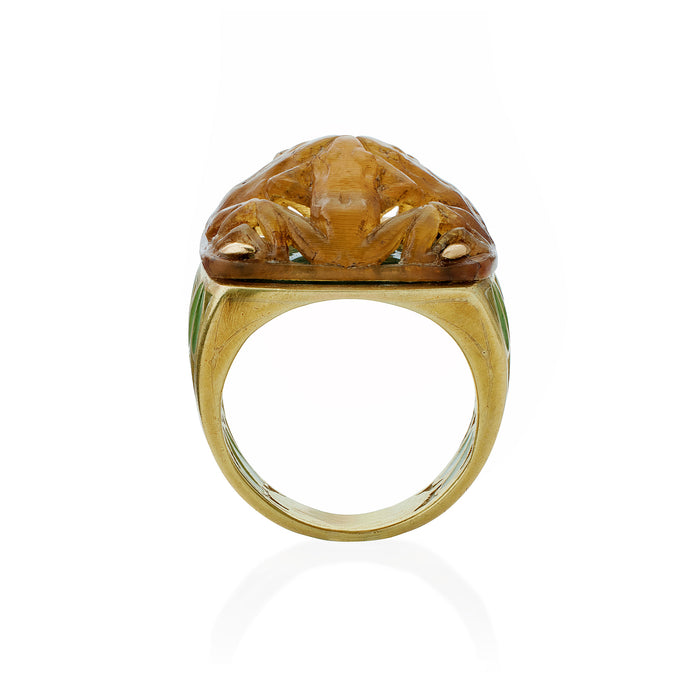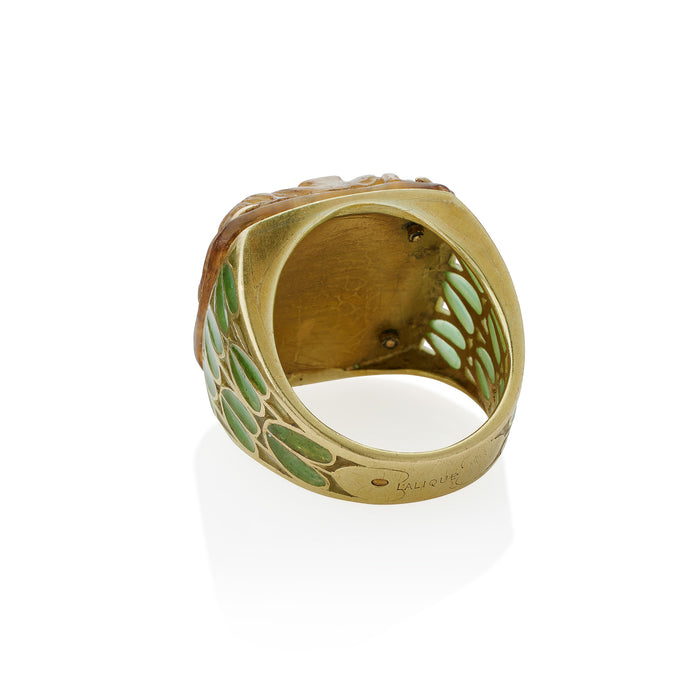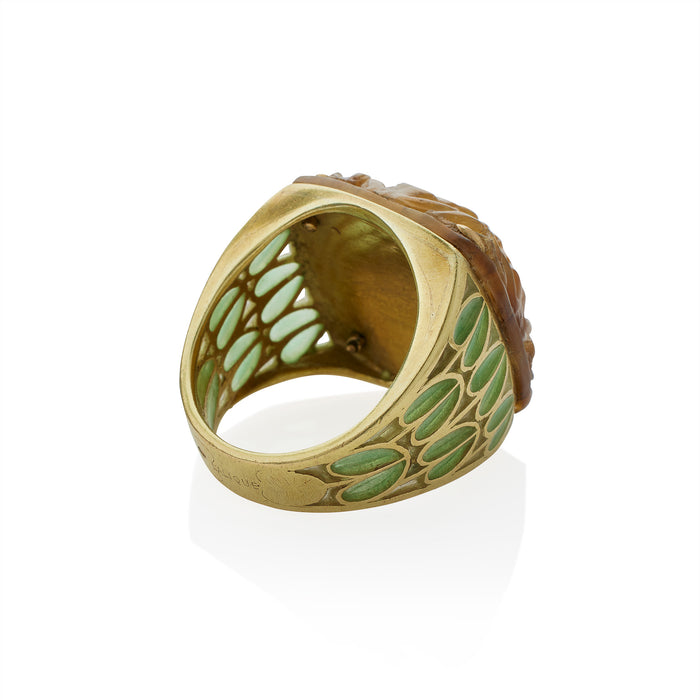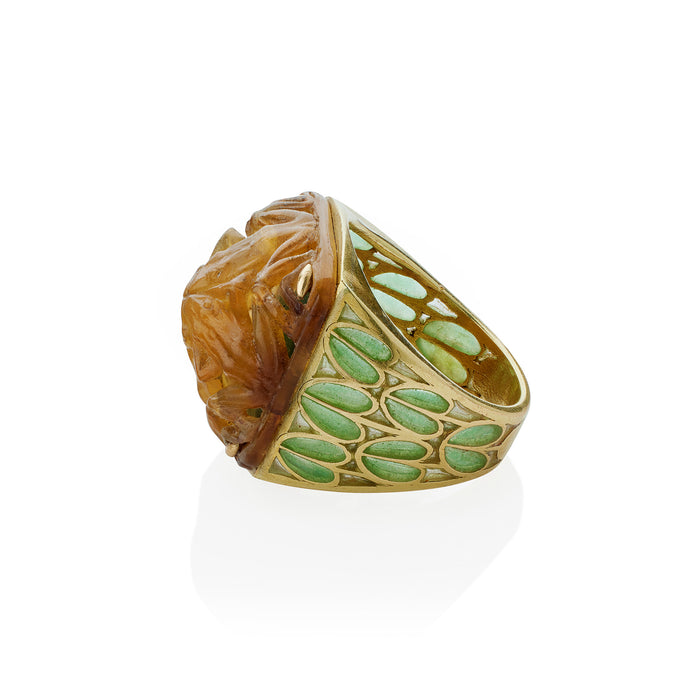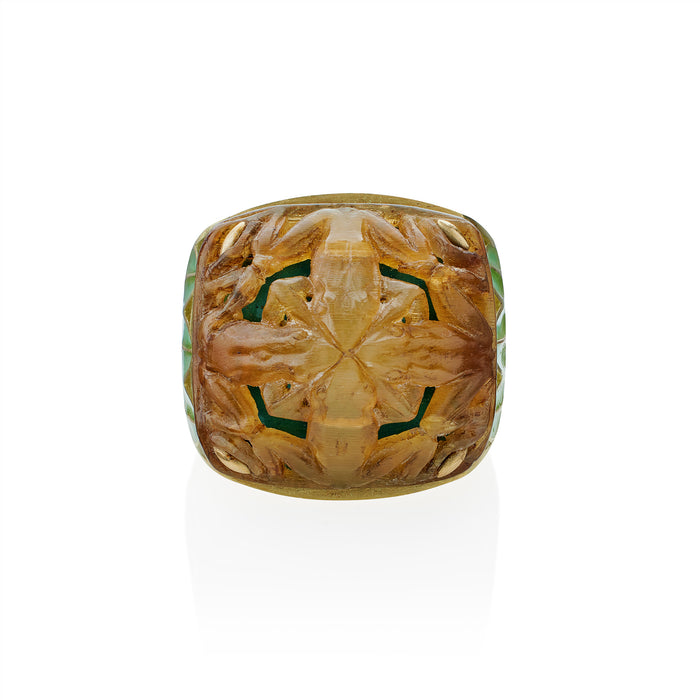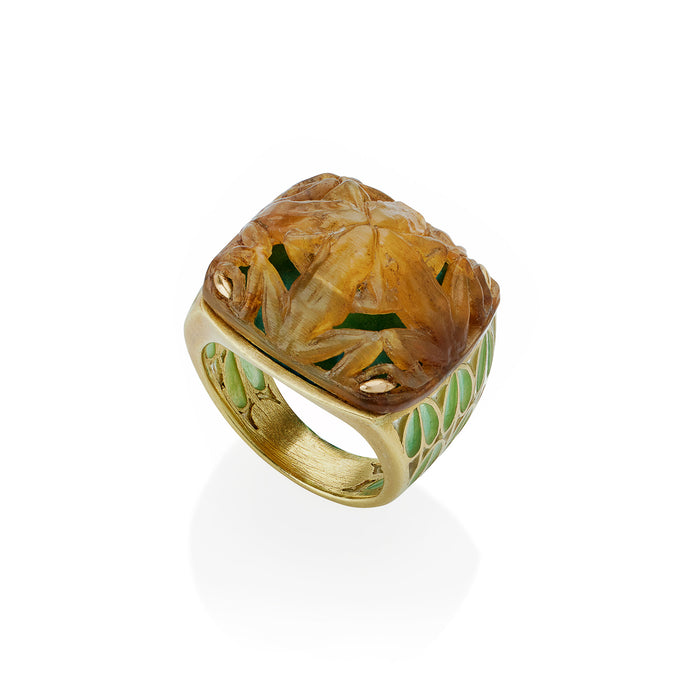
René Lalique Art Nouveau Carved Horn and Plique-à-jour Enamel "Grenouilles" or Frogs Ring
$45,000
Created circa 1900-1905, this "Grenouilles" or "Frogs" ring is composed of carved horn, plique-à-jour enamel and 18K gold. The broad ring's bombé form top is carved and pierced to represent four symmetrical frogs meeting at their heads over a green enamel base, completed by plique-à-jour enamel shoulders and chased shank of stylized locust leaves. A rare use by Lalique of carved horn and plique-à-jour enamel in a ring, this subtle harmony of gold and green celebrates the abundance and natural symmetry of summer flora and fauna.
- Product Details
- Curator's Notes
Item #: R-21377
Artist: René Lalique
Country: France
Circa: 1900-1905
Size: 8.5
Materials: Carved horn; Plique-à-jour Enamel; 18K Gold (with small repair to one frog)
Signed: LALIQUE, French exportation mark
According to Sigrid Barten, Lalique discovered horn's potential in jewelry in 1896, introducing to the art yet another substance that had formerly been deemed too humble. Most often reserved by Lalique for combs and tiaras, it is relatively rare to find a ring set with carved horn. As Lalique experimented with the material, he found its elasticity beautifully suited his purposes. The multi-step process he developed in-house rendered horn exceptionally transparent while being easy to mold, press, bend and shape. He could dye it in a variety of nuanced shades, with formulas resulting in brown, white and yellow, or blonde and gray, and was able to mount it with silver, gold and gems. He worked the molded horn with piercing tools, files and saws.
Though no design drawing for this ring has been located, the combination of horn and plique-à-jour enamel suggests a date circa 1900-1905. An enamel Dog Collar plaque of enamel and plique-à-jour enamel frogs "La Princesses au Sabbat" dates from 1899, while a necklace of glass frogs, enamel and diamonds shows the artist's continuing interest in the motif (c. 1902-1903). By 1905, Lalique was showing an increasing interest in experimenting with the possibilities of glass to achieve light, color and sculptural effects, and began to turn to it in place of plique-à-jour enamel as glass allowed for the creation of imagery uninterrupted by the lines of the gold cells.

